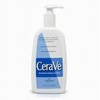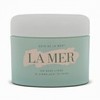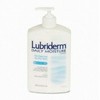Buying Advice: Body Lotion
Applying a good body lotion should be an integral part of your daily skincare routine. Dry, dehydrated skin can not only appear red or ashy but also can itch or even flake. Moreover, dehydrated skin can’t repair itself as quickly, so it begins to age at an accelerated rate. There are a vast number of different body lotions on the market, and prices can range from $1.50 to over $400. Without knowing what to look for, it can be difficult to differentiate between different products and find the right body lotion for your skin type and budget. Below, we have broken down the most important components of body lotions to help you make a more educated purchasing decision.
What to Know Before You Buy
Basic Ingredients
While it would be impossible for the typical consumer to understand all of the different ingredients in a moisturizer, it is still important to have a basic understanding of what is in your body lotion before you buy it. This knowledge may also help you to identify what you don’t like about your current body lotion. A good, basic moisturizer should contain ingredients that have humectant, occlusive and emollient properties, as well as some combination of lipids. Essentially, the right formulation of these ingredients will help to replenish surface hydration, as well as restore the skin's natural barriers against moisture loss and external irritants. The lotion should rub in easily and smoothly and shouldn’t feel tacky as it dries.
Humectants attract water to the uppermost layer of your skin, known as the stratum corneum. They typically draw water from the dermis below to hydrate the surface of your skin, but they can also attract water from the air in very humid conditions. Glycerin (also known as glycerol) is the most popular humectant because it is inexpensive and highly effective. Other examples of humectants that you might come across include propylene glycol (less "sticky" than glycerin), sorbitol, hexylene and butylene glycol, urea (10%), hyaluronic acid, sodium PCA and alpha-hydroxy acids (AHA's).
Occlusive agents help to maintain hydration by preventing the evaporation of water from the surface of your skin. The most effective occlusive is petrolatum (or petroleum jelly), but other popular occlusives include lanolin, mineral oil (or paraffin), and silicone derivatives (ex. cyclomethicone, dimethicone). While lanolin is widely used, it has been shown to contribute to contact dermatitis in some instances and may not be a good choice for everyone. Other examples of occlusive agents include beeswax and botanical waxes (ex. candelilla, carnauba, palm kernel or soybean).
Emollients (mainly lipids and oils) improve the appearance of your skin by smoothing flaky skin cells and can even provide some occlusivity (sealing in moisture) when applied heavily. There are hundreds of emollients, but some common ones include all non-fragrant plant oils, cocoa butter, shea butter, ceramides, cholesterol, triglycerides and fatty acids. Fatty acids may be listed as linoleic, stearic, oleic, linolenic, and lauric acids (can be found in coconut, palm or grapeseed oils).
More Beneficial Ingredients
Beyond the basic ingredients listed above, a well-formulated body lotion will also contain a blend of antioxidants, cell-communicating agents and anti-irritants. While some ingredients offer more than one benefit, it is important that your body lotion contain ingredients with these important qualities if you really want to see an improvement in the overall tone and texture of your skin.
In addition to being a great natural preservative, antioxidants help prevent premature aging by neutralizing free radicals, which oxidize lipids and break down skin cells. Antioxidants will enhance the effectiveness of your sunscreen, and they will also improve your skin's ability to heal itself and produce healthy collagen. Common antioxidants include Vitamins A (beta carotene), Vitamin C (ascorbic acid) and Vitamin E (tocopherols), white or green tea, licorice root, selenium (glutathione), soy extract, grape seed extract, pomegranate extract, etc.
Ingredients with cell-communicating properties are beneficial to your skin because they theoretically “tell” your skin cells to look and act like normal, healthy skin cells, according to skincare expert Paula Begoun. These ingredients are especially helpful if you have hyperpigmentation or want to reduce the signs of aging (ie. wrinkles/fine lines, blotchiness or discoloration). Cell-communicating ingredients could appear on the label as a niacinamide (Vitamin B3), retinol, adenosine triphosphate, etc.
Lastly, anti-irritants or soothing/calming ingredients are also a very important component of a good body lotion that you can never have enough of, particularly if you have sensitive skin. Anti-irritants aid in the skin's healing process and protect it from damage caused by external sources such as the environment, sun, pollution or even from other skincare products (ex. sunscreen). Common anti-irritants include aloe, allantoin, green tea, grape extract, licorice root, chamomile extract, bisabolol, burdock root, etc.
Avoid Ingredients that Irritate Skin
Even if you don’t have sensitive skin, we would still suggest avoiding body lotions with ingredients that can irritate skin because irritation breaks down your collagen, which is the protein in skin that keeps it smooth and young looking. While you may love a body lotion's scent, fragrance is the #1 cause of irritation and probably isn't the best moisturizer for daily use. One thing to keep in mind here is that products marked "unscented" aren't necessarily "fragrance-free". Lotions with dyes or color additives can also be very irritating and should be avoided when possible. Other potentially irritating preservatives that you might see in the list of ingredients include sorbic acid, citric acid, benzyl alcohol, and parabens.
Sunscreen
Since sun damage anywhere on your body will make you look significantly older than you are, it is extremely important to apply a sunscreen with at least an SPF 15 every day, regardless of your skin type. While it may sound convenient to purchase a daily moisturizer with SPF in it, these lotions are not appropriate for everyone. First of all, the higher the lotion’s SPF, the more sunscreen ingredients it contains and the less room there is for other important ingredients. If you have dry, mature, or sensitive skin, you are probably better off using a good body lotion without SPF and then applying a sunscreen over it.
Know Your Skin Type
Now that you understand the different components of a body lotion, you need to consider which formulation (ie. type of lotion and ingredients) will be best for your skin type. As background, body lotions are available in creams, ointments, lotions or milks, which all provide varying degrees of hydration.
- Dry Skin: Look for thicker, oil-based creams or ointments that contain heavier occlusive emollients such as dimethicone (silicone derivative). For severely dry, cracked skin, opt for ones with petroleum-based ingredients like mineral oil or paraffin.
- Normal or Combination Skin: Look for a lightweight, water-based lotion that contains lighter oils such as aloe, jojoba, cetyl alcohol or silicone derivatives (ex. cyclomethicone).
- Oily Skin: Look for a very lightweight, nonaqueous, oil-free moisturizer. Just like for your face, you should look for products labeled "noncomedogenic", meaning it won’t clog pores.
- Sensitive Skin: Look for a lightweight moisturizer that contains soothing ingredients, such as allantoin, chamomile or aloe, and that doesn't contain potential irritants, such as acids, fragrances or dyes.
- Mature Skin: Look for petrolatum-based moisturizers that have ingredients to fight wrinkles like antioxidants or AHAs.
Packaging
Packaging is another important thing to consider when buying body lotions because it can impact the performance of the lotion over time, especially if it has a lot of antioxidants. It is best to avoid any lotions in clear containers or jars because exposure to light and/or air will quickly deteriorate the effectiveness of the antioxidants. Additionally, jars aren't as sanitary as pump bottles or tubes because you end up spreading bacteria every time you put your fingers in the jar to extract the lotion.
Health Concerns
There have been some safety concerns related to the use of parabens and propylene glycol (in high concentrations) in body lotions, as well as in other personal care products. While some people argue that these ingredients are toxic and contribute to health issues, most experts (including the FDA) believe that any risks posed by these chemicals are negligible in such low concentrations. However, if you are still concerned about exposure to any potentially harmful chemicals, you can always look into all-natural, organic body lotions, but we still encourage you to read their ingredient lists very closely.
Conclusion
Now that you have a better understanding of how to choose the best body lotion for your skin, don’t let yourself get distracted by marketing ploys or start to think that higher priced lotions will be more effective than drugstore brands. No matter how much money you spend, there is no miracle body lotion that will turn back the hands of time or permanently rid you of cellulite or stretch marks. That said, there are a lot of really great inexpensive and expensive body lotions that can help keep your skin well-hydrated, so it looks and acts healthier and doesn’t age prematurely.
If possible, you should always try to get samples of the body lotions you are considering before you buy them. What works well for a friend might not be ideal for you, so you just want to check out how your skin reacts to different products. Once you've found the perfect body lotion, try to apply it immediately after showering to towel dried, exfoliated skin for the best results.




